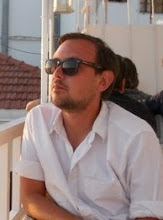
Narratively speaking, nothing much happens in Iranian director Majid Majidi's The Color of Paradise (1999). A greasy widower, hair matted crustily to the sides of his head, tries to abandon his son, Mohammad, at a school for the blind. When the school's directors refuse, the boy and his father travel to one of Iran's lush mountain outposts, where the family's matriarch, known simply as Granny, tends a plot of land and cares for Mohammad's two sisters. Later, Mohammad will apprentice with a blind carpenter and fall into a rushing stream.
Such simplicity, however, can be deceiving — the film pushes the viewer into the realm of the miraculous, imbuing the clack of a woodpecker or the swaying stalks of wildflowers with an almost spiritual meaning.
Mohammad, earnest and joyful, hears the repetitive code of Braille in the whistling calls of birds, in the voice of nature communicating through oblique combinations of letters and numbers; despite his inability to see, he submerges himself in the world, in the possibilities of seeing with ears and hands and nose.
The film's heightened sense of sound, the brief pulses of noise that recur throughout, convey Mohammad's aural sensitivity so that the viewer, too, experiences the world through Mohammad's perspective. Sound — amplified, dampened, articulated lovingly if ever so briefly — marks the lively and celebratory, or, conversely, the dimming hopes of a family sliding gently into ruin.
Arriving in his grandmother's village, tucked into the vernal hillside as though snuggling up for comfort and warmth, Mohammad's gleeful calls of "Granny! Granny!" resound with the innocent, uncomplicated love of a child, with a faith that all will be well.
The whispering grass of Granny's alfalfa plot conjures a quiet chuckle of content, while her flutish voice playfully acknowledges the benefits of a young spirit. The unadulterated joy of watching Mohammad and Granny clasp hands reaffirms, if only for a spell, a belief in the strength of familial ties.
Angry with her for obeying his father's wishes that he not be sent to the local school, Mohammad sulks and evades her embrace. Her eyes well up, her face falls, and she says to him, her voice ever so slightly stiffer, deeper, "I would die for you."
Such love overwhelms; one cannot help but feel her tenuous touch, or sense the warm air of her voice. The film attempts to portray, maybe too hopefully, a world in which the weakest members — the blind, the infirm, the persecuted — are not necessarily destined to suffer the hatred they have, in recent times, suffered so often.
By the end of the film, though, shifts of tone, color and sound reflect darkening horizons and weakening constitutions.
In contemporary Iran, as in postwar Germany, Italy and Japan, the wounds created by time, by the terrors of history, require years to sew shut, to scab over and to heal. Even then, the greatest blemishes and blunders, the most frightening scars, may last lifetimes.
In The Color of Paradise, paradise, in all its beautiful shades is lost. Sun gives way to gray skies, while bright flowers are relinquished for dullish wood and the black soot of never-ending fires. And the call of birds floats slowly away, replaced by the industrial hum of a power saw or the infrequent whine of a duck.
When a bridge breaks and Mohammad falls into rock-strewn rapids, his father (after pausing a moment in what is either relief or shock, and possibly both) jumps in after him. The camera begins to take on his perspective, disorienting the viewer with the bubbling fierceness of nature's wrath, muffling the sounds on which we have thus far relied.
The quiet, searching denouement which follows is devastating, somehow unspeakable, shaking the very fabric of the humanistic faith which runs throughout the middle portion of the film.
To fill the great void left in my heart by the film's end, I immediately began to watch it again, taking pleasure once more in the barely hidden verbiage of colors and sounds which infuses Mohammad's visit with Granny.
The experience confirmed for me, if nothing else, that the strength of emotions galvanized by film remains unparalleled, and that this medium, starting in some cases to show its age, is still worth a hell of a lot.






